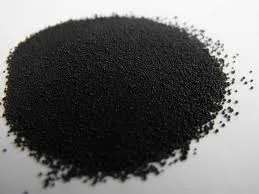Exploring the Rich History and Uses of Indigofera Tinctoria in Indigo Dye Production
The Fascinating World of Indigofera Tinctoria The Source of Indigo Dye
Indigo dye has a rich and storied history that stretches across civilizations and cultures. At the heart of this vibrant color lies a remarkable plant known as Indigofera tinctoria, endemic to regions of Asia and Africa. This leguminous plant not only offers a stunning deep blue hue that has captivated artists, designers, and textile enthusiasts for centuries, but it also reflects a complex interplay of culture, history, and environmental sustainability.
The Botany of Indigofera Tinctoria
Indigofera tinctoria is a shrub that typically grows between 1 to 2 meters tall and is characterized by its slender stems and delicate, feathery leaves. The plant produces small, pink to purple flowers, which eventually give way to pods containing seeds. What sets this plant apart is its ability to yield a dye known as indigo, which is derived from the leaves.
The process of extracting indigo dye is both art and science. Indigo itself is a compound known as indican, which is initially water-soluble in the plant but must undergo a transformation to become the insoluble form that produces the characteristic dye. Traditional methods involve fermenting the leaves in water, which allows the indican to oxidize and precipitate out as a blue pigment. This dyeing process not only requires skill but also a deep understanding of the chemical reactions involved, making it a craft that has been passed down through generations.
Cultural Significance of Indigo Dye
Indigo dyeing has played a significant role in various cultures throughout history. In ancient Egypt, indigo was used for dyeing textiles, and it was often associated with royalty and the divine. In regions of West Africa, indigo dyeing is a communal activity where families come together to create intricate patterns on cloth, which are often used in traditional ceremonies.
In India, the art of indigo dyeing has been deeply entwined with regional identities. The vibrant blue is not just a color but a symbol of cultural pride among communities. The renowned tie-dye technique, known as Bandhani, employs indigo dye to create stunning designs on fabric. Such practices help sustain local economies and provide livelihoods for artisans and craftspeople.
indigofera tinctoria indigo dye

Environmental and Ethical Considerations
In recent years, there has been a resurgence in interest in natural dyes, including indigo, as global awareness of environmental issues grows. Synthetic dyes, which dominated the textile industry during the late 19th and 20th centuries, have detrimental effects on aquatic ecosystems and pose health risks to workers in dyeing factories. In contrast, Indigofera tinctoria presents a more sustainable alternative.
Farmers cultivating indigo can engage in regenerative agricultural practices that promote biodiversity and soil health. The leguminous nature of the plant allows it to fix nitrogen, enriching the soil naturally and reducing the need for chemical fertilizers. Additionally, using natural indigo dye supports local economies, allowing artisans to connect with consumers who appreciate the value of ethical, sustainable fashion.
The Revival of Indigo Dyeing
Today, there is a growing movement advocating for the revival of indigo dyeing practices. Designers, brands, and consumers increasingly seek out sustainably sourced textiles, often featuring indigo dye as a focal point. This resurgence has led to collaborations between traditional artisans and contemporary designers, breathing new life into ancient techniques while making them relevant for modern fashion.
Workshops and educational programs focused on indigo dyeing are popping up around the globe, allowing enthusiasts to connect with the craft and learn about its historical and cultural significance. Through these efforts, the artistry of indigo dyeing can continue to flourish, bridging the gap between past and present.
Conclusion
Indigofera tinctoria is more than just a plant; it is an emblem of heritage, creativity, and sustainability. As we continue to navigate an era marked by environmental consciousness and appreciation for craftsmanship, the legacy of indigo dye reminds us of the beauty that lies within tradition and the potential for innovation. Embracing the stories that indigo tells through its color can lead to a deeper understanding of our interconnectedness with nature and each other. As we adorn ourselves in its deep blue hue, we celebrate not only the artistry of indigo dye but also the cultures and communities that have nurtured it through the ages.
-
The Timeless Art of Denim Indigo Dye
NewsJul.01,2025
-
The Rise of Sulfur Dyed Denim
NewsJul.01,2025
-
The Rich Revival of the Best Indigo Dye
NewsJul.01,2025
-
The Enduring Strength of Sulphur Black
NewsJul.01,2025
-
The Ancient Art of Chinese Indigo Dye
NewsJul.01,2025
-
Industry Power of Indigo
NewsJul.01,2025
-
Black Sulfur is Leading the Next Wave
NewsJul.01,2025

Sulphur Black
1.Name: sulphur black; Sulfur Black; Sulphur Black 1;
2.Structure formula:
3.Molecule formula: C6H4N2O5
4.CAS No.: 1326-82-5
5.HS code: 32041911
6.Product specification:Appearance:black phosphorus flakes; black liquid

Bromo Indigo; Vat Bromo-Indigo; C.I.Vat Blue 5
1.Name: Bromo indigo; Vat bromo-indigo; C.I.Vat blue 5;
2.Structure formula:
3.Molecule formula: C16H6Br4N2O2
4.CAS No.: 2475-31-2
5.HS code: 3204151000 6.Major usage and instruction: Be mainly used to dye cotton fabrics.

Indigo Blue Vat Blue
1.Name: indigo blue,vat blue 1,
2.Structure formula:
3.Molecule formula: C16H10N2O2
4.. CAS No.: 482-89-3
5.Molecule weight: 262.62
6.HS code: 3204151000
7.Major usage and instruction: Be mainly used to dye cotton fabrics.

